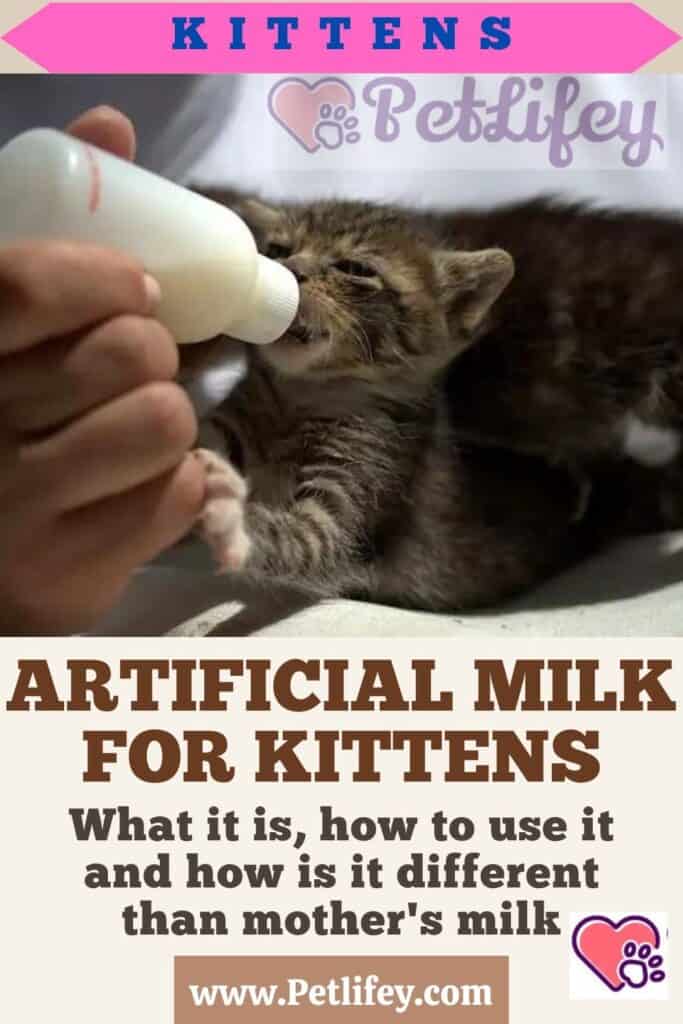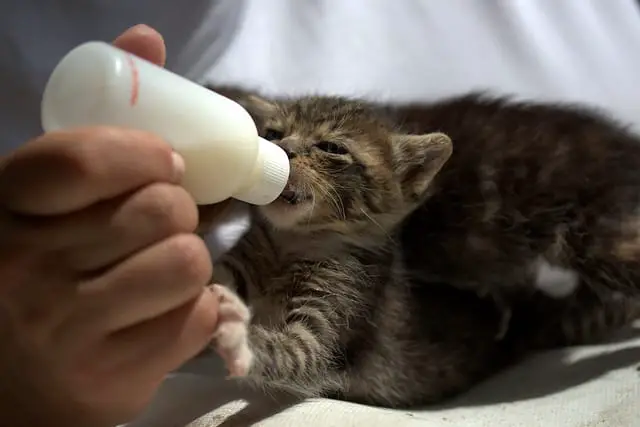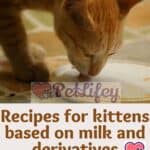Kitten formula, or powdered milk, is the ideal solution for weaning an orphaned kitten – here’s what to know.

There are particular situations in which, for the survival of the newborn baby, artificial milk is recommended instead of mother’s milk. If we want to know everything about its administration, the doses and the type to choose as artificial milk for kittens, this is the right article. Let’s also see what are the risks of overfeeding and all the tips to give it to our little feline without any risk.
Powdered milk for cats: when needed
We see them small and defenseless, and in a certain sense it is just like that because they need to eat and keep themselves strong, especially in the first days of life which are the most delicate ones.
Yet there are some situations in which mother cat’s breast milk is not enough, or it is not ‘available’, so the administration of formula milk for kittens is absolutely necessary. Here’s when:
- breast milk is not enough,
- the kitten is an orphan,
- mother cat can’t breastfeed,
- there is no feline nurse to replace,
- mother cat is dead.
Breast milk vs formula milk: the differences
In reality this is not a real challenge as it is difficult that in the presence of a healthy and perfectly healthy mother cat, powdered milk is preferred to maternal colostrum for dogs and cats.
If milk is highly discouraged for adults of the species, as it causes severe intestinal disorders in cats and does not digest well, for kittens it is absolutely necessary as it is essential for their growth.
It is obvious that mother’s milk is, by far, the first choice: colostrum has fundamental nutritional properties for the first days of a kitten’s life, for its growth and for strengthening its immune system.
Cow’s milk is never a valid alternative, not even skimmed or diluted with plenty of water, as it does not contain enough protein and fat for the baby: goat’s milk and lactose-free milk are preferred to it, because they are more similar to mother’s milk.
Artificial milk for kittens: how it’s made
How do we find infant formula for kittens on the market? Usually in two types: powder and liquid.
In fact, it must not be our arbitrary choice, since it is always better to discuss with an experienced veterinarian to understand which type of milk is right for us.
We can even find colostrum in the pharmacy, if our little kitten has not been nursed by his mother since the first hours of his life.
To prepare the composition of infant formula it is recommended to carefully read the labels on the back of the package.
Your doctor will likely recommend diluting the mixture with more water to prevent it from being too heavy and causing diarrhea in your cat.
Artificial milk for kittens: doses and advice for its administration
Let’s consider that as soon as they are born, kittens have a very small stomach, which fills up almost immediately: for this reason it is highly not recommended to ‘abound’ with the portions of formula milk, as it could feel bad and have indigestion.
In the first two weeks of kittens’ life, veterinarians usually recommend giving formula milk every 3-4 hours for a total of 7-8 times a day.
From the third week onwards it is better to decrease the frequency, lowering it to 5-6 times. Once the kitten has finished sucking its portion of milk, it is necessary that it be stimulated to burp, that is, it is induced to eliminate the excess air it has ingested.
Better to stimulate the intimate area (anal and genital) with a cotton swab dipped in warm water, in order to induce the kitten to defecate and urinate, exactly like the mother cat would do with her tongue.
Useful tips to avoid risks

It is not always advisable to use a bowl to give formula milk to newborn kittens, as the cat may not have the strength to even get close to the edge.
On the market it is easy to find special bottles and syringes without a needle of 3-5ml or droppers.
Better not to put too much pressure on the plunger or the like, because it could put too much milk into the cat’s mouth. Better to wait for the little cat to suck.
When we ‘breastfeed’ the kitten it is advisable never to put it in the supine position, but always on its stomach, exactly as they would if they sucked the milk from a mother cat.
The greatest risk is that the milk can end up in the lungs and block breathing.
Better to carry out the operation in a warm and calm and comfortable environment. The ideal temperature of the compound, on the other hand, must be around 35-37 ° C.
The formula once ready can be given to kittens up to two days after its preparation if kept well in the refrigerator.






